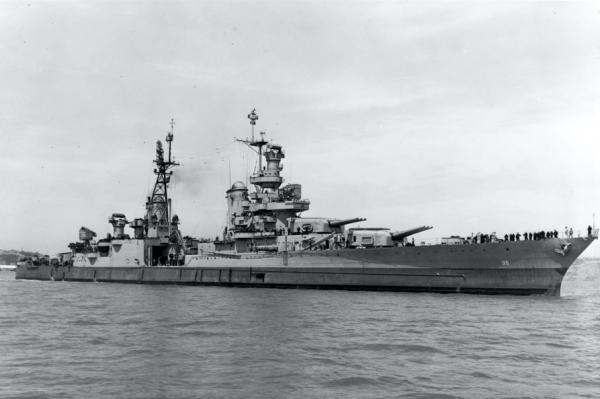
Aug. 19 (UPI) — A civilian research vessel owned by Microsoft cofounder Paul Allen located the wreckage of the USS Indianapolis, a battleship sunk by the Japanese in the waning days of World War II, the Navy said Saturday.
The discovery came after decades of mystery surrounding the ship’s final minutes on July 30, 1945, after it suffered two direct torpedo strikes from a Japanese submarine that caused it to sink in less than 15 minutes.
The Indianapolis had a crew of more than 1,100 sailors, of whom just 316 survived. Only 22 members of its crew are still alive.
The ship was located on the floor of the northern Pacific Ocean at a depth of more than 18,000 feet. It was located by scientists aboard the Research Vessel Petrel, which Allen owns. The Petrel has tracked down other warships lost at sea during the conflict using its state-of-the-art subsea monitoring equipment.
“To be able to honor the brave men of the USS Indianapolis and their families through the discovery of a ship that played such a significant role in ending World War II is truly humbling,” Allen said. “As Americans, we all owe a debt of gratitude to the crew for their courage, persistence and sacrifice in the face of horrendous circumstances. While our search for the rest of the wreckage will continue, I hope everyone connected to this historic ship will feel some measure of closure at this discovery so long in coming.”
The Naval History and Heritage Command said there were several complicating factors that, until recently, had prevented scientists from locating the final resting place of the Indianapolis. Because the ship sank so quickly, the crew did not have time to send a distress signal indicating their final coordinates. The Navy did not realize the ship was even missing for four days, until it failed to arrive at its scheduled port.
The delayed rescue response complicated what was an already difficult evacuation for the ship’s crew and was partly to blame for the high number of sailors lost at sea. Crew members didn’t have time to deploy most the ship’s lifeboats or other survival gear before it went down. Hundreds of sailors died of exposure and shark attacks while floating in the ocean for nearly a week before help arrived.
Further complicating matters, the ship’s captain, who survived the attack, said the Indianapolis was exactly on its prescribed course headed to port when it was hit. The ship had just completed a covert mission delivering components of the atomic bomb that would be dropped on the Japanese city of Hiroshima.
The captain’s recollection was incorrect, leading researchers to search an area of the sea floor farther west than where it was eventually located. NHHC historians discovered the mistake after records showed a U.S. naval landing craft in the area had spotted the Indianapolis hours before it was attacked and logged its location, giving Allen’s vessel a new 600-square-mile area of ocean floor to search.
Under U.S. law, the wreckage of the Indianapolis is considered a war grave and cannot be disturbed. The Petrel’s research crew is continuing to survey the sea floor and said a video tour of the site using an unmanned submarine will be conducted in the coming weeks, with the footage made available to the public.
The Navy said as part of the occasion it plans to honor the 22 surviving crew members and family of those sailors killed.





